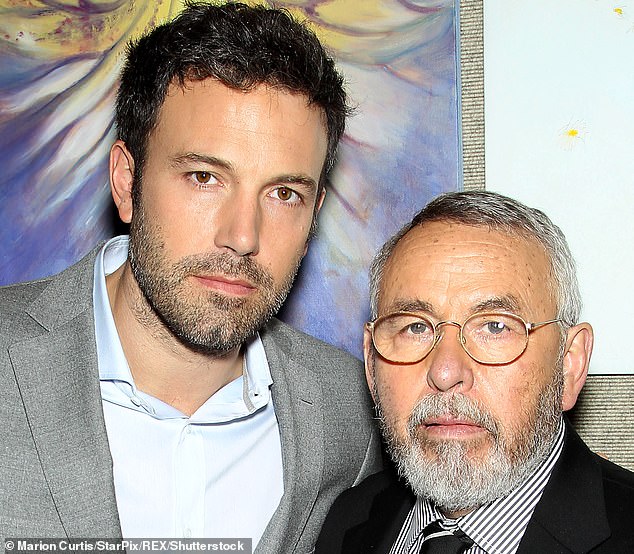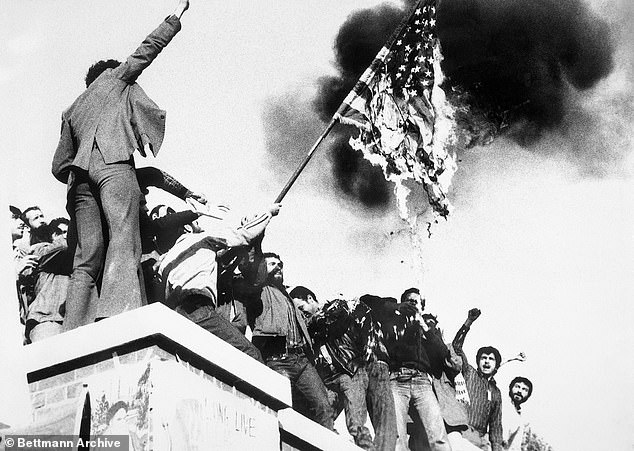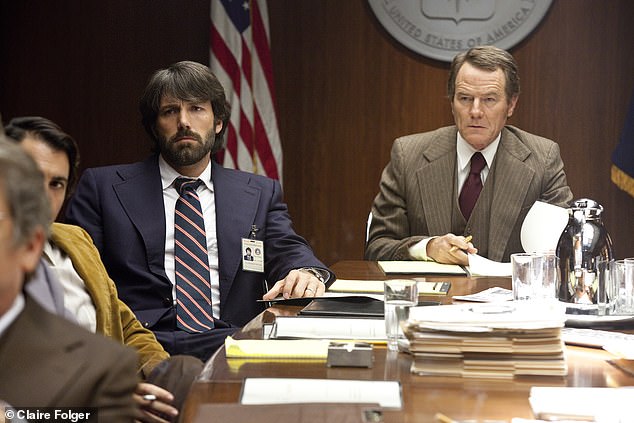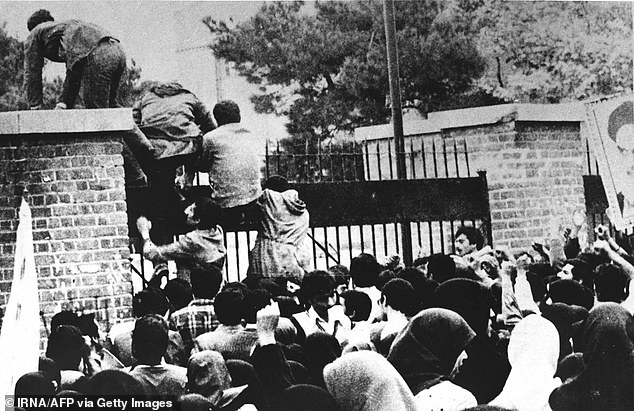CIA reveals Ed Johnson as the second spy involved in ‘Argo’ mission to rescue US diplomats stuck in Tehran during the Iran hostage crisis
The CIA has revealed the name of the second officer involved in the daring rescue of six US diplomats from Tehran during the 1979 Iran hostage crisis, made famous in the 2012 Ben Affleck film Argo.
Ed Johnson, an accomplished linguist who speaks five languages, was identified as the second officer who helped the diplomats walk freely through Iranian customs, disguised as a Canadian film crew.
His name was announced on Thursday in an episode of the intelligence community’s podcast: The Langley Filessolving the long-standing mystery of the officer who joined CIA disguise and counterfeiting expert Tony Mendez on the mission.
The mission, known unofficially as the “Canadian Caper,” is one of the CIA’s greatest successes, but the Hollywood version starred Affleck Mendez as a solo officer who carried out the rescue.
Although the CIA has long recognized that a second officer was critical to the mission, his identity was kept secret at the request of Johnson, who never sought public recognition for his role, the CIA said. New York Times.
The CIA has identified Ed Johnson as the second officer involved in the Argo mission. Above, Johnson (right) is seen being presented with the CIA’s Intelligence Star by then-Deputy Director of Operations John N. McMahon, in a photo provided by Johnson’s family

Ben Affleck (left) is seen with Tony Mendez, the CIA officer he played in Argo. The identity of the second CIA officer who took part in the rescue mission has been revealed

Ed Johnson, an accomplished linguist who is fluent in five languages, was identified as the second officer who helped the diplomats walk free amid the Iran hostage crisis. Pictured: Students burn an American flag after storming the US embassy in Tehran in 1979
“He was someone who spent his life doing things quietly and in the shadows, without any expectation of praise or public recognition,” Walter Trosin, a CIA spokesman and co-host of the agency’s podcast, told the Times.
‘And he was very happy that it could stay that way. But it was his family who encouraged him later in life to tell his side of the story, because they thought it would be valuable for the world to hear.”
Johnson, now 80, has medical issues that have prevented him from appearing on the podcast or giving interviews.
The now-declassified rescue mission took place after Iranian students stormed the US embassy in Tehran and took dozens of Americans hostage.
In the chaos, six diplomats escaped and took refuge in the homes of Canadian Ambassador Ken Taylor and another Canadian official, where they hid out of sight for more than two months.
In a daring rescue mission, Canada and the United States collaborated on a plan to smuggle the six out of Tehran on genuine Canadian passports with forged Iranian visas showing they had only been in Iran for a few days.
The group posed as a Hollywood crew scouting locations for a science fiction film called Argo. They successfully passed through Iranian border control and boarded a plane to Switzerland in January 1980.
The story of the escape was retold in the 2012 film Argo, starring actor Affleck as CIA agent Mendez, who helped create the cover story and provide disguises for the diplomats.

The story of the escape was retold in the 2012 film Argo, starring actor Ben Affleck (left) as CIA agent Mendez

Tony Menendez’s book and memorabilia for the fake movie Argo, a fake science fiction film used as a cover story during the rescue mission
Now new details have emerged about the role played by Johnson, an accomplished linguist who was fluent in French, German, Spanish and Arabic.
However, he did not speak Persian, the main language in Iran, because the CIA feared that its officers proficient in Persian would be known to Tehran’s intelligence services.
Yet Johnson’s language skills proved invaluable, including shortly after he and Mendez arrived in Tehran and accidentally navigated to the Swedish embassy, which was directly across the street from the occupied American embassy.
One of the revolutionaries guarding the American embassy confronted them. It turned out that the guard spoke German, which allowed Johnson to write down the cover story and get directions to the Canadian embassy.
The Iranian guard suddenly became friendly and cheerfully gave directions to the Canadian embassy, Johnson recalled in an oral history interview with the CIA, included in the new podcast.
After meeting with the stranded American diplomats, Johnson and Mendez provided them with disguises, Canadian passports and the Hollywood cover story.

A file photo taken on November 4, 1979 shows Iranian revolutionary students climbing the gate of the US Embassy in Tehran. It took 444 days for the crisis to end with the release of 52 Americans, but the US broke off diplomatic ties with Iran in 1980 and ties have been frozen ever since.
They also coached the diplomats on how to act, keeping a light-hearted attitude and making jokes as they passed through border control.
“These are newbies,” Johnson recalled in oral history. ‘These were people who were not trained to lie to the authorities. They are not trained to be clandestine and elusive.”
The mission culminated on January 27, 1980 when the two CIA officers and six diplomats successfully passed passport control at Tehran’s Mehrabad Airport and boarded a flight to Zurich.
Johnson recalled in oral history that he was shocked to see that the plane was named Aargau, after a Swiss canton of the same name. It was merely a coincidence.
It took 444 days for the embassy hostage crisis to end with the release of 52 Americans on January 20, 1981.
The US broke off diplomatic ties with Iran in 1980 and ties have remained frozen ever since.
